Minus Nine (score & parts)
-
Ships in 3 to 4 weeks
Details
Description
SKU: CN.18260
Composed by David Madeira. Score & parts. Duration 8:30. Published by C. Alan Publications (CN.18260).This delightful work uses the unique combination of a keyboard percussion quartet and a string quartet to musically represent the beautiful & exotic world revealed during low tide on Puget Sound.
Minus Nine refers to a very low tide that occurs once in a while at my father's house on Puget Sound, when the water gives way to a vast rocky shore, revealing all kinds of odd sea creatures that otherwise remain hidden. This foreign landscape gradually appears and disappears with nothing to herald its coming, but to those that wander down to explore the beach at this time, a beautiful and exotic world is revealed. An appropriate set-up for this piece has the string quartet placed in its common formation, with the mallet instruments in an arc behind the strings. Percussionists should use medium to medium-soft yarn mallets, so that there is just a faint patter of contact noise. The feel of the opening and closing sections of the piece is one of a slow and steady 4/4 pulse; however, all quarter notes are divided into 5 sixteenth notes instead of four. This should feel natural and smooth, as if this is the way the beat is always divided. Percussionists should take care to avoid too much pulse, though a slight 2 + 3 pulse may be used if necessary or desired. At rehearsal letter B when the meter changes every couple of measures to 5/8, the percussionists never change pace: their quintuplet 16ths become normal sixteenths, so that the only thing that changes in those bars is the beat. The middle adagio section is performed with normal beat divisions. Finally, care should be taken to observe specific dynamic markings, especially at the beginning and end. The overall effect should be of the music materializing out of nothing, presenting itself, and then fading back to nothing. The parentheses in the final bar indicate that the percussionists will essentially be "ghosting" notes inaudibly for the last several seconds.
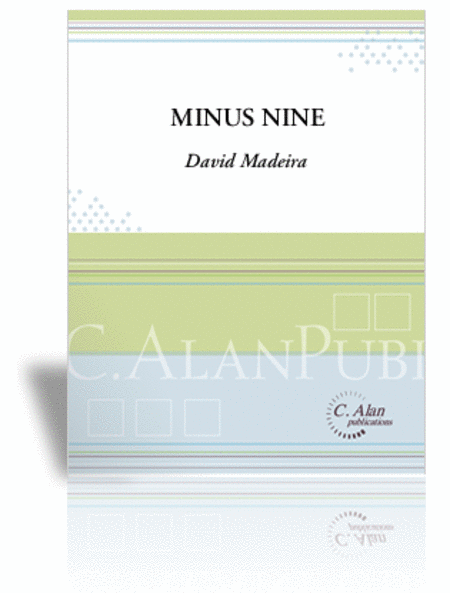
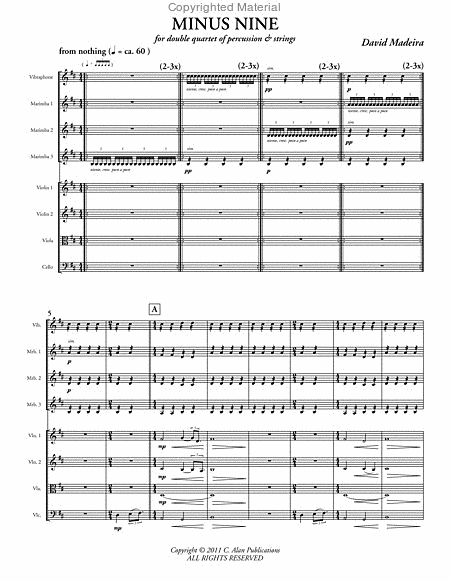
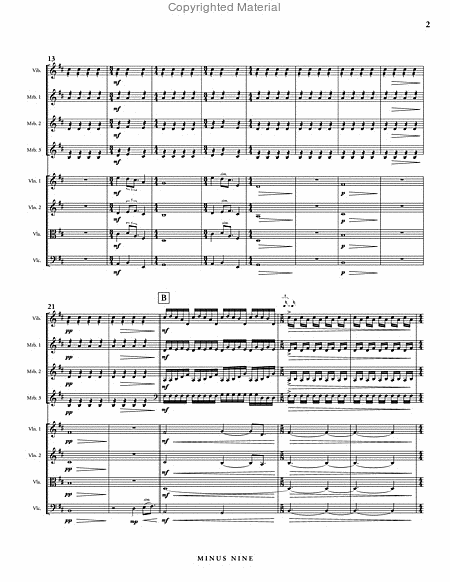
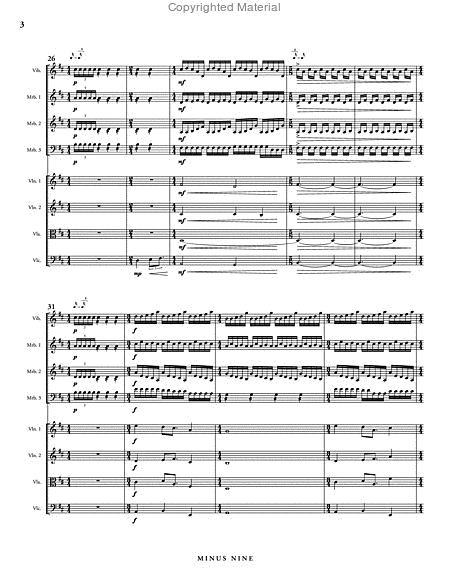
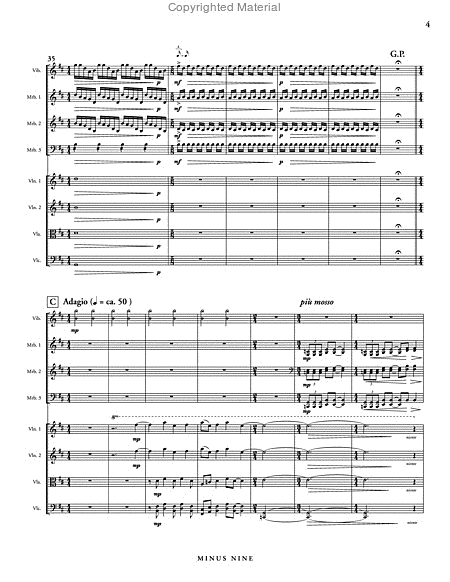
 Share
Share